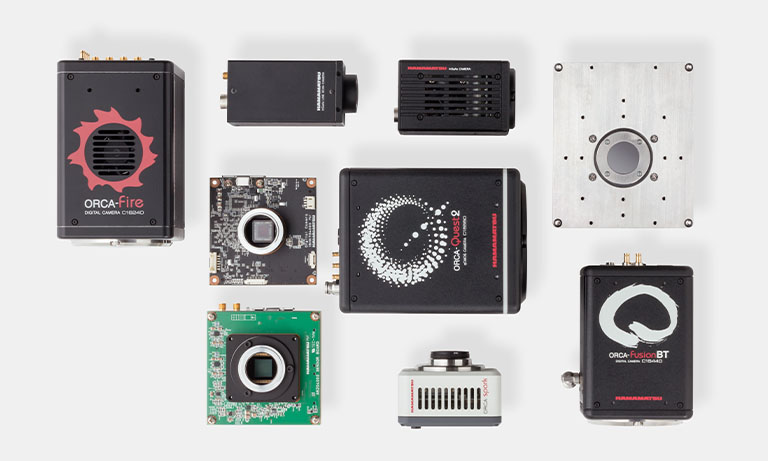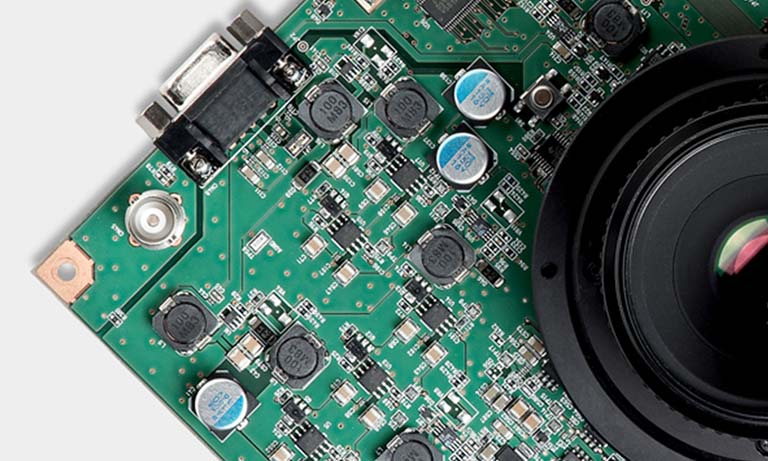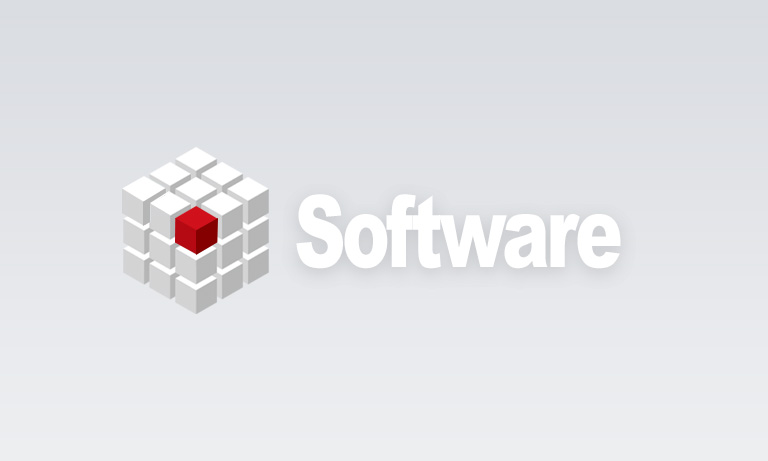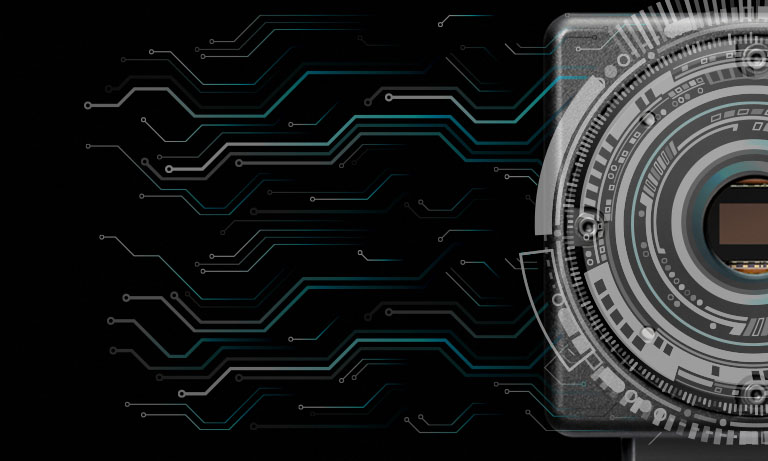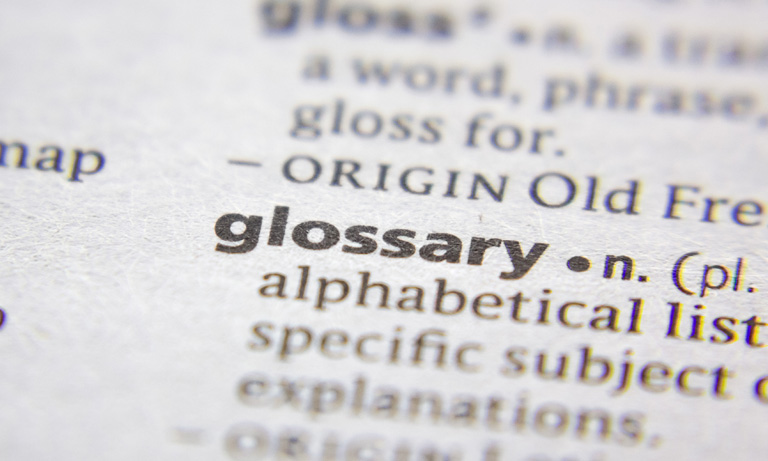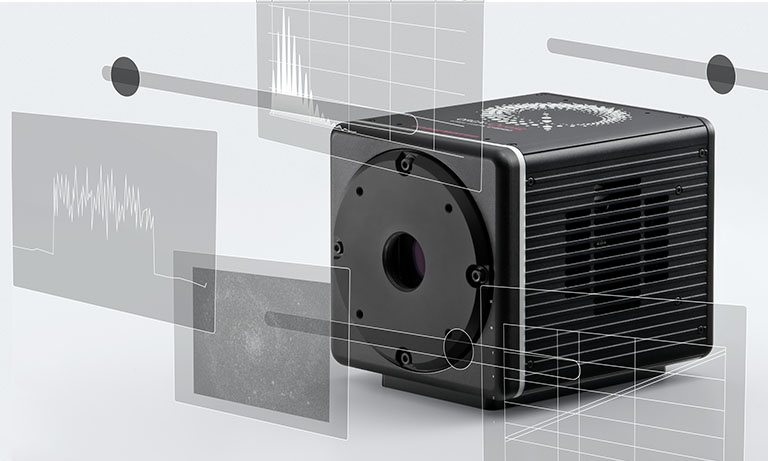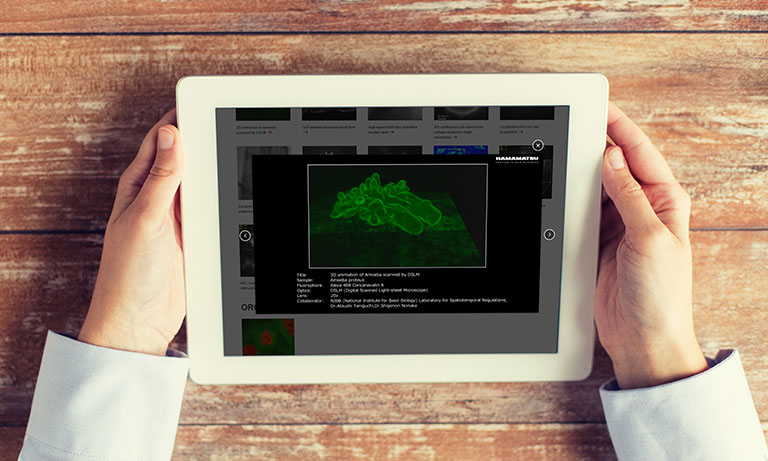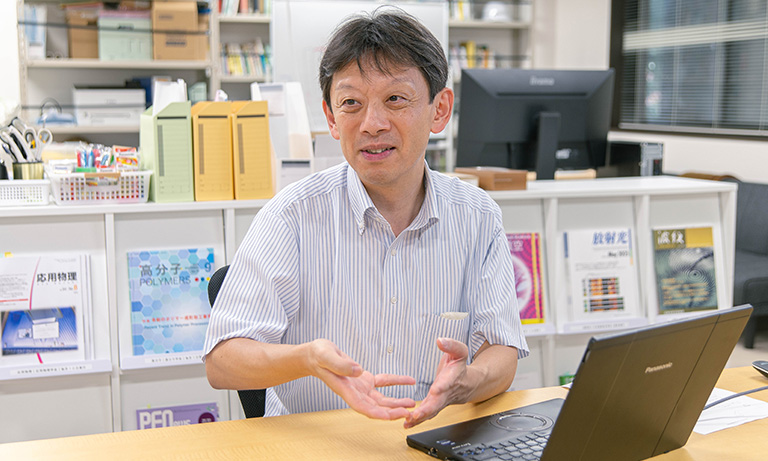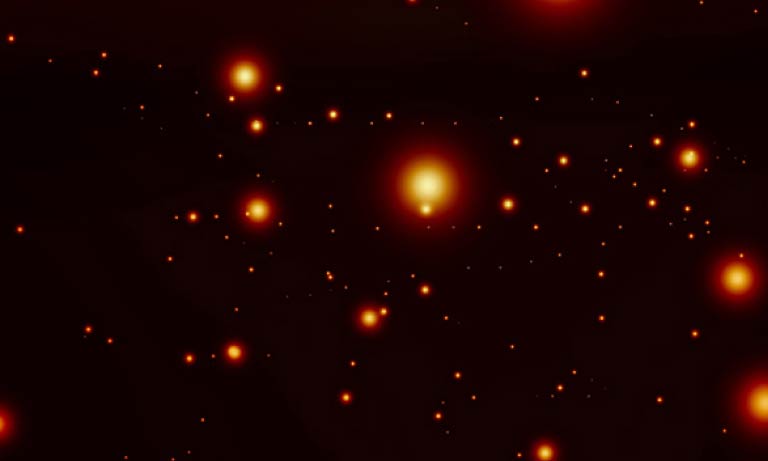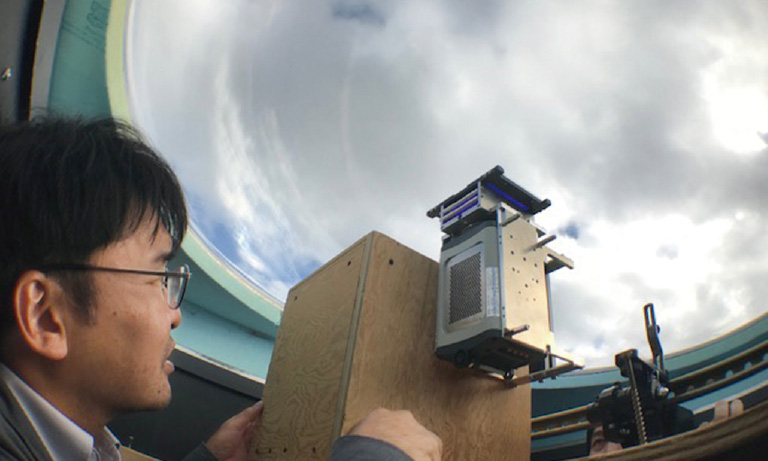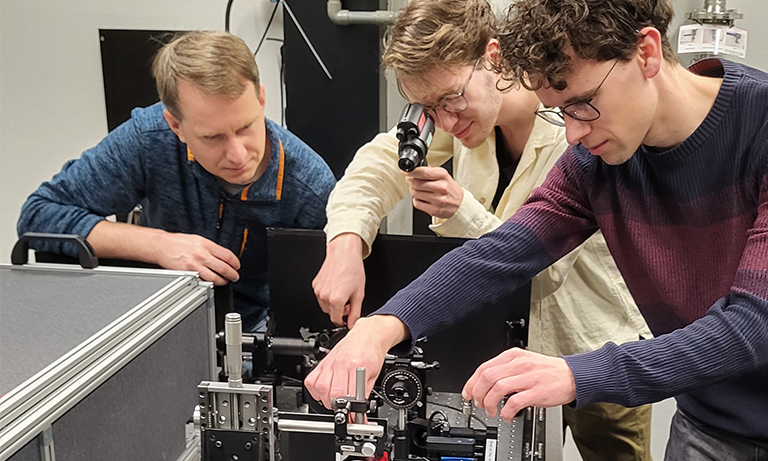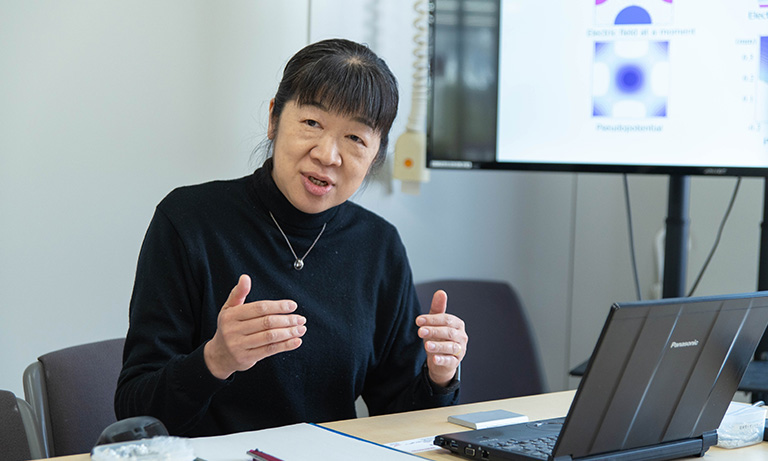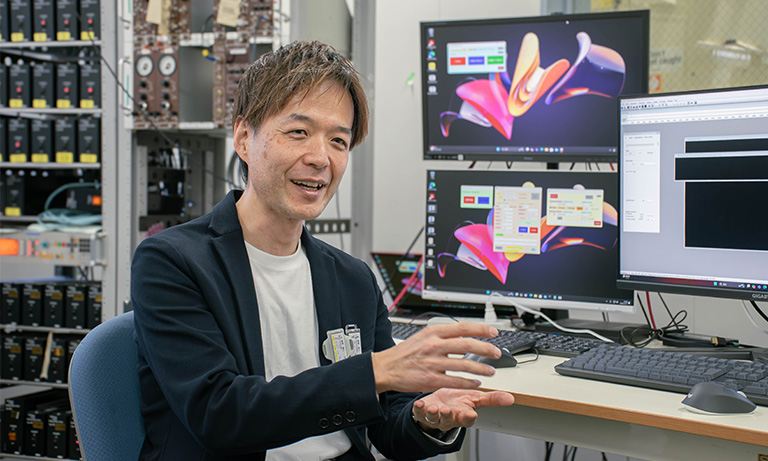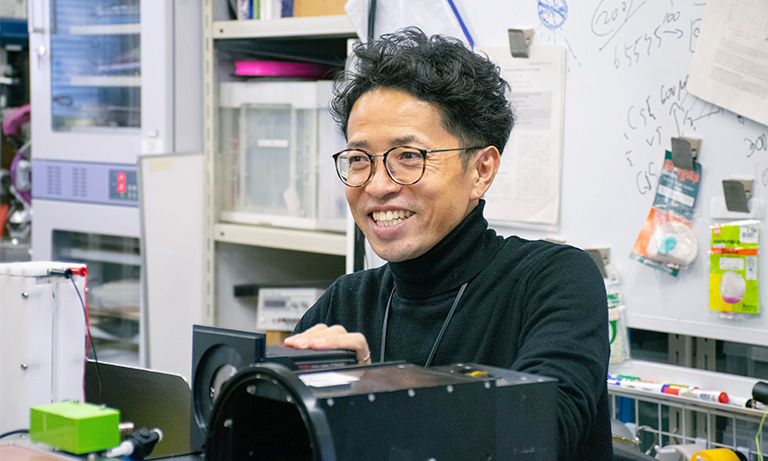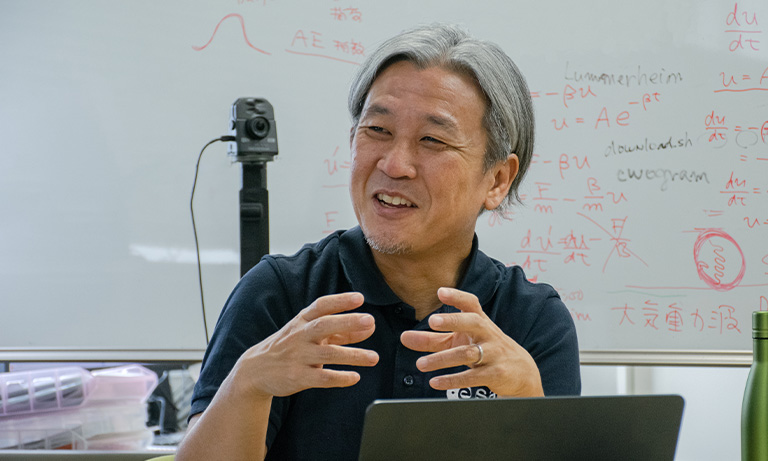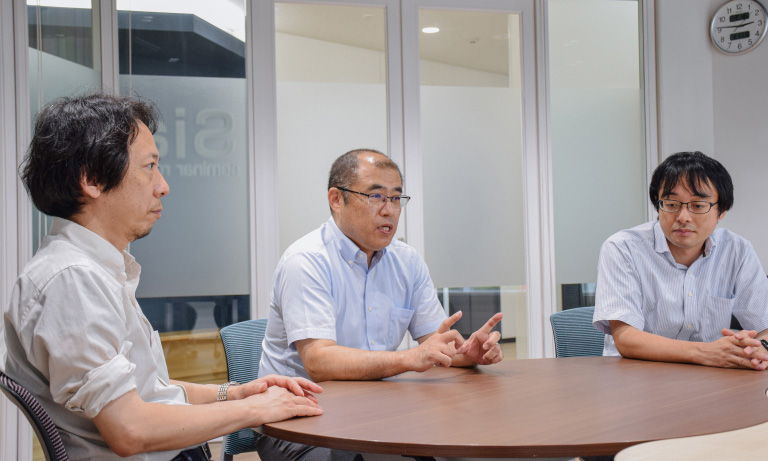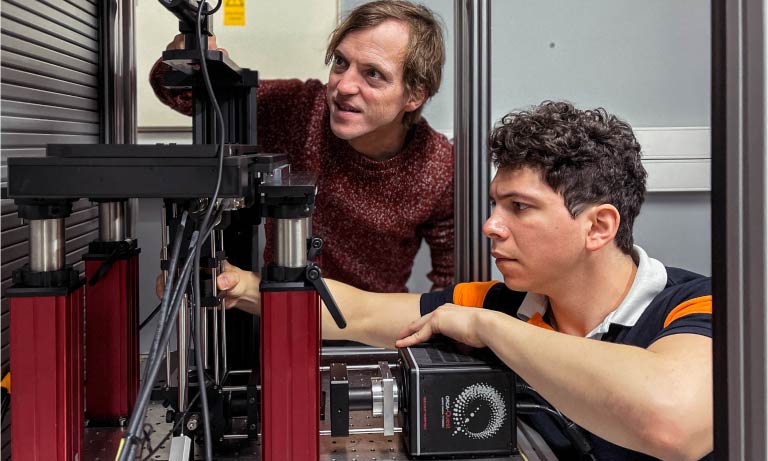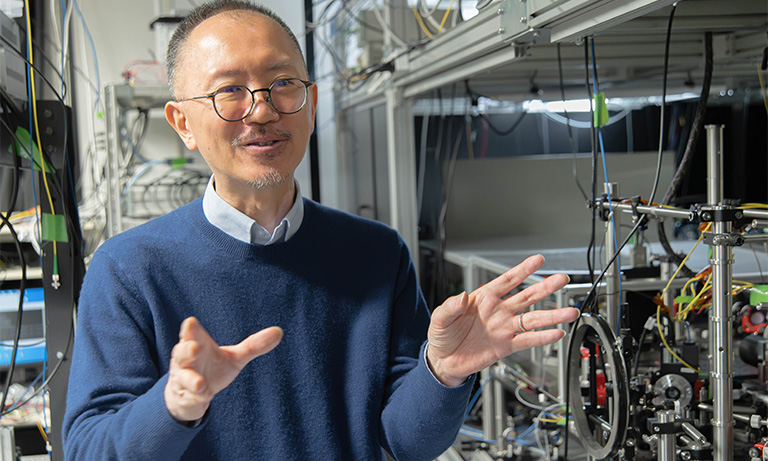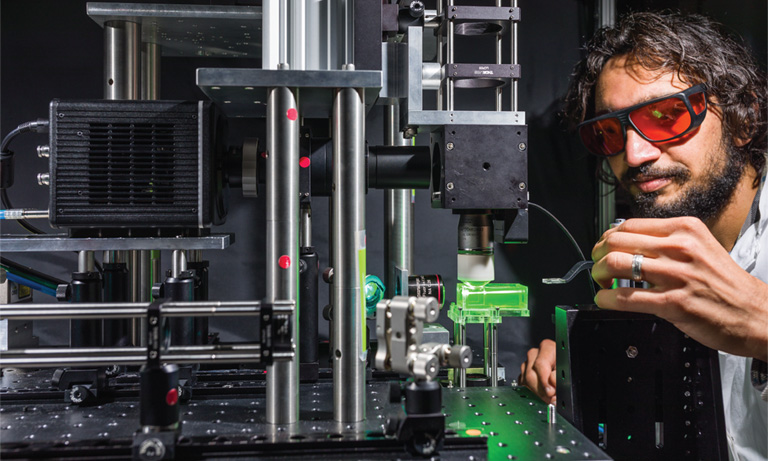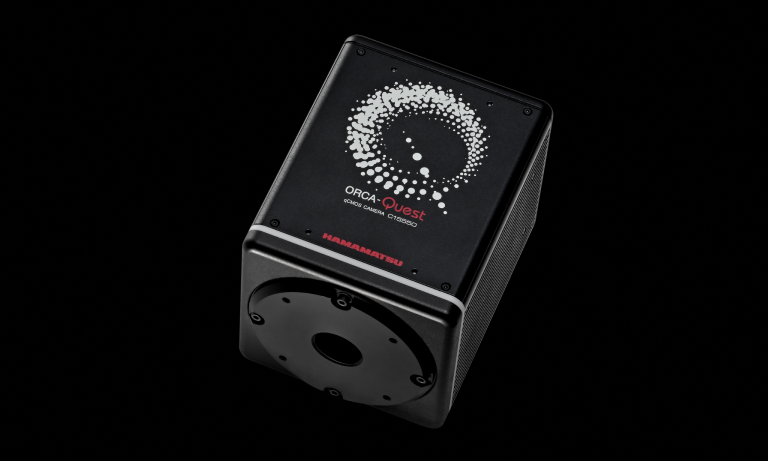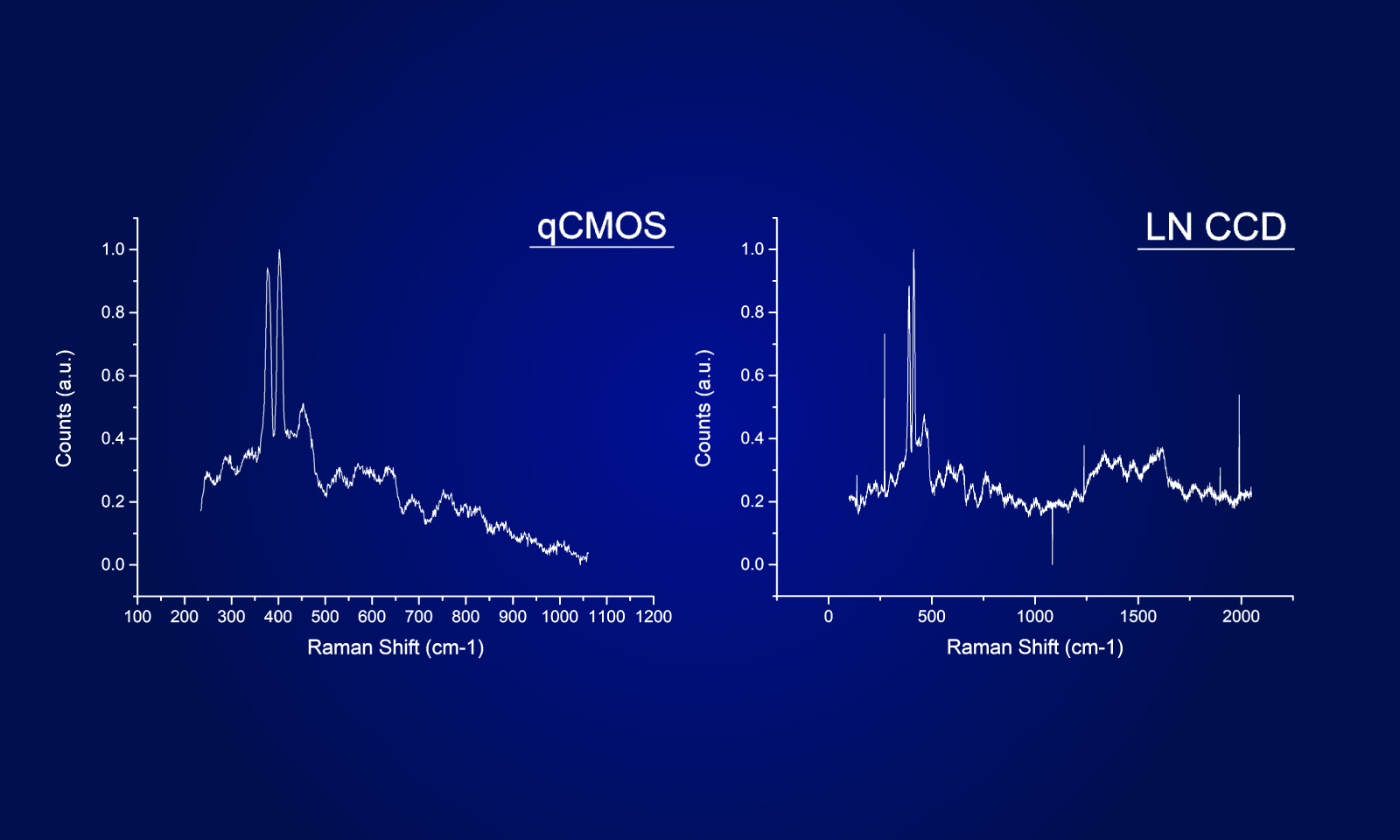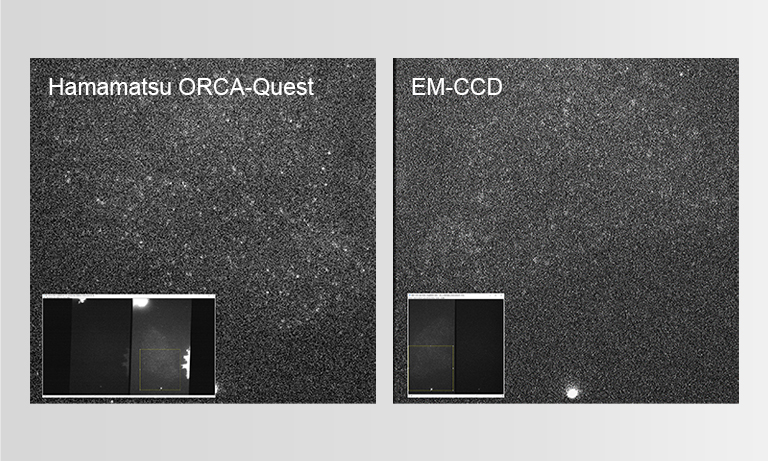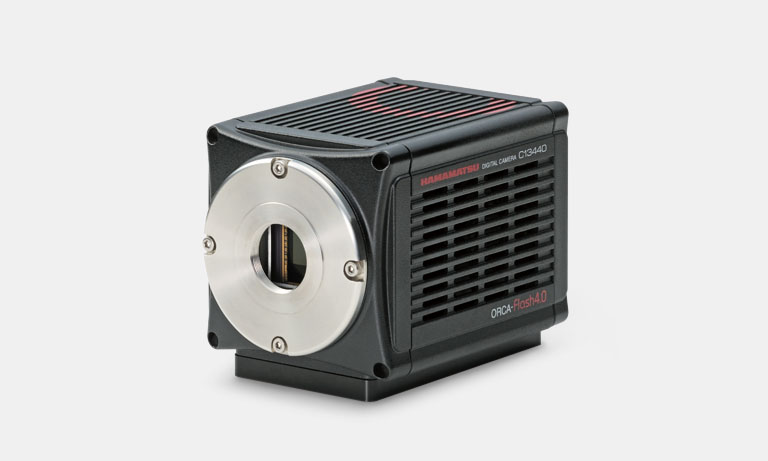Japan (JA)
国・地域を選択してください。
波面センサの性能向上による補償光学装置の進化
2025年10月16日公開
系外惑星を観測する方法はいくつかあり、それらの方法を使ってこれまで約4000個ほどの系外惑星が確認されていますが、そのうち、望遠鏡を使った観察装置での「直接撮像」により確認できているのはわずか10~20個程度だといいます。望遠鏡を使った観測装置の精度を高め、一つでも多くの惑星の放つ光を捉えることが研究の大きなミッションとなっています。
補償光学は、大気ゆらぎにより乱れた波面を即時に補正し、望遠鏡の性能限界における最も歪みのない鮮明な星像を得るための装置で、望遠鏡を使った観察装置のキーコンポーネントともいえる存在です。
リアルタイムかつ高精度な波面補正を実現するために、高速な読み出し性能と高い分解能が求められます。また、より暗い天体やレーザ人工星など、非常に光子数が少ない状況で波面補正が行われる場合もあり、カメラには高い感度が必要となります。
性能向上のためにはどんなことが必要なのか、究極の性能に達した先で実現されるものは何か ― 巨大望遠鏡を使った系外惑星の直接撮像に取り組む、京都大学大学院理学研究科附属天文台 山本 広大 様に、補償光学の現状の性能やそれらを使った今後の展望について伺いました。
惑星が実際に放つ光を望遠鏡を使った観察装置で直接撮像したい
-補償光学を使った惑星観察の現状について教えていただけますか?
私たちは今、岡山県に新しくできた日本で一番大きい望遠鏡「せいめい」に搭載する観測装置を作っています。系外惑星を直接撮像するための装置です。
世界で最初に系外惑星の実際の光を検出できたのは2008年ごろですが、そこから世界中の研究機関があの手この手で光の検出を試みているものの、これまで惑星と認められているのはわずか10~20個程度なんです。直接撮像以外の方法を用いた観察では系外惑星は約4000個検出されているので、直接撮像できているのがわずか10~20個くらいとなると、検出できている数が少ないですよね。
少ない理由として直接撮像を目的とした観測装置の性能がまだ足りていないこともありますが、そもそも系外惑星というのは自ら光を放つ恒星の近くにあるとても暗い天体なので、その光を検出するのが非常に難しいんです。
我々は、先出の望遠鏡「せいめい」用に系外惑星撮像装置 「Second-generation Exoplanet Imager with Coronagraphic AO (SEICA)」を開発して、より暗い天体を見つける取り組みもしていますが、誰も発見できなかったような惑星を検出できるほどの性能は実現できていません。
世界には、すばる望遠鏡やチリにあるVLTのように口径が8 m~10 mもある大型の望遠鏡があり、高い検出性能をもっているものもあります。望遠鏡の検出性能は大型であればあるほど上がるので、口径がそれらの半分以下である「せいめい」は比較をしてしまうと性能が劣ってしまいます。観測装置の性能はどんどん上がってはいるものの、恒星の近くに存在する非常に暗い天体を検出するにはまだまだ性能が足りないのが現状です。
大型望遠鏡での惑星の直接撮像の礎を築く
-直接撮像で系外惑星を見つけるために開発された補償光学装置「SEICA」。今後更なる性能向上が求められますが、性能を向上することでどのような成果を期待していますか?
「SEICA」の目標は2つあります。1つは系外惑星の検出、もう1つは将来大型望遠鏡にも適用できるような技術のテストベッドとしての役割を果たすことです。
新しい技術を開発して系外惑星を実際に検出しましょうという時、先ほどお伝えしたとおり、その対象は非常に恒星に近い、暗いものなので観察するのが難しいんです。観察が難しい理由はそれだけではなく、空気中にある大気の影響を受けることも大きな要因です。大気が乱れるといわゆる星の瞬きのような形で像が歪んでしまったり、像の輪郭がぼやけてしまったり、ずれてしまったりときれいな像が得られなくなります。そういった大気の乱れによる影響を打ち消すものとして、補償光学装置が開発されました。
惑星の直接撮像を行って惑星の実態を解明していくことも私たちの主な目標ですが、補償光学装置の性能を高め、将来的に補償光学装置を搭載した大型望遠鏡での惑星の直接撮像の礎を築くことも、私たちの研究成果として挙げられることを期待しています。
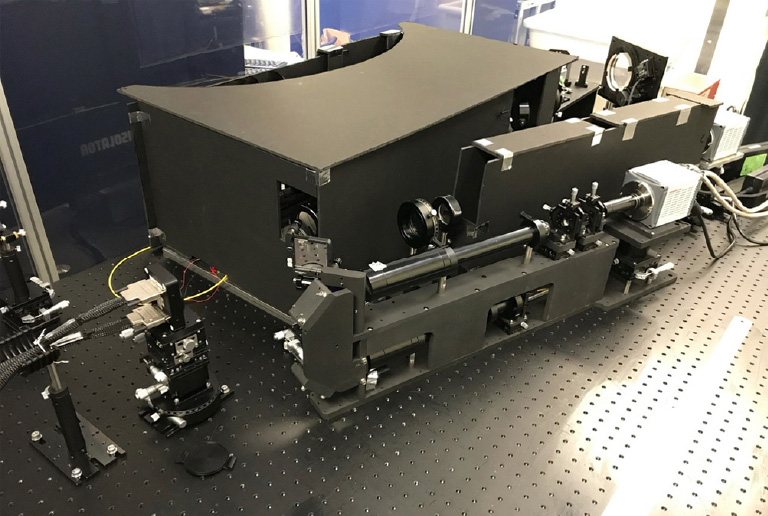
補償光学装置「SEICA」
波面センサの性能向上が進化のカギを握る
-1つ目の目標「系外惑星の検出」を達成するために、補償光学装置の性能向上は必須と伺いましたが、そのためには最も必要なことは何でしょうか?
補償光学装置の中でも「エクストリームAO」といわれている極限補償光学装置があります。「エクストリームAO」はすばる望遠鏡などにも搭載されているのですが、私たちの開発したものはFPGAを使ってより高速で高精度な波面制御を行えるようにしています。なぜそこまで高精度な波面制御を追求しているかというと、繰り返しになりますが、大気の乱れをいかに打ち消すかが撮像の精度に直結するからです。
実は、大気の形そのものはそれほど変形しないんです。1 kHz、6.5 kHzくらいの速度で見るとほとんど同じ形を保っているのですが、これが風が吹くと流されてしまうんです。なので、「ここだな」って思って観ている波面の形状が次の瞬間には流れて別の形状を見ていることになってしまう。だから、計測と補正の間での時間遅れによって生じたずれが形状エラーとして生まれてしまうんですね。厳密に言えばリアルタイムで波面を計測しつつ補正しているだけでなく、風で流れる先の波面を予測して補正してしまう制御アルゴリズムも組み合わせて制御しています。
これまでの「傾斜計測」の波面センサというのは、波面の各点の傾きを見て、それを元々の形状に積分して復元することで波面の形状を確認しますが、積分する分、各点の測定エラーが全体の形状測定に伝搬してしまうんです。我々の補償光学装置に採用した「位相計測」なら「波面のこの位置はどれくらいの高さですよ」というのがダイレクトに測れるんですね。
直接位相を計測できる分、エラーが生じにくい。系外惑星の直接撮像を目的とした補償光学装置には高速で高精度な波面制御が必要であるため、波面計測もそうである必要があります。補償光学装置の進化には、波面センサの性能向上が不可欠なのです。
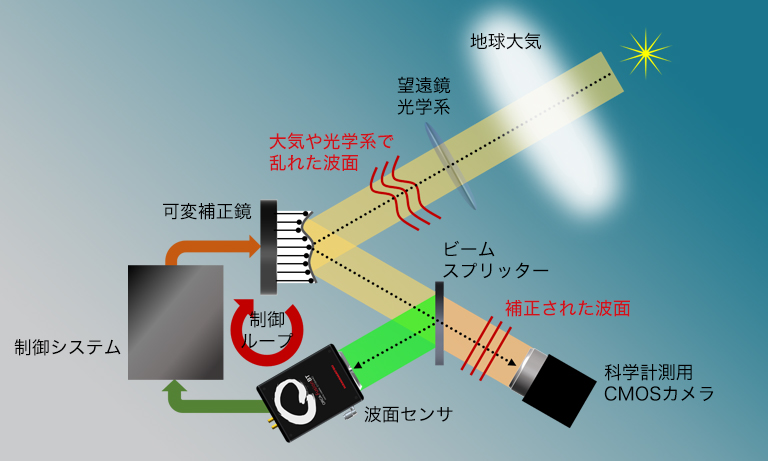
地球以外の場所で、生命を探す
-2つ目の「大型望遠鏡への適用」についても詳しくお伺いしたいです。そして研究を突き詰めていく先に見る理想などもあれば合わせて教えていただけますか?
系外惑星を研究しているレベルでいうと、やはり一番研究者が究極と思っているのは、「地球以外の場所で生命を探す」だと思います。当然、惑星表面にいる生命を光学的に分解するというのは絶対に無理なので、見た目で植物が生えているとか、もう少し手前でいうと酸素があるとか、どういう大気の組成をしているんだろうといったことを生命を発見する少し手前の発見としてきちんと計っていきたいという思いはあると思います。
直接撮像というのは、言ってみれば分光ができるわけですよね。分光ができるということは、どういう分子が有るかというのがきちっとわかる手がかりを得られるということ。生命がいるかいないか、いるとしたらどういうものがいるだろうとか、ということをわかっていく上での手がかりを直接撮像でつかむということが、やはり、僕らの世代で上手く到達しうる「究極」になるのではないかと思っています。
乱流による影響を0にする装置を目指して
装置開発の面での「究極」というと、本当に究極を言ってしまえば、本当に大気の乱流による影響を完全に消してしまうような補償光学の装置を作ることが目指すべきところにはなりますね。現状開発されているものも20年ほど前にあったような補償光学の装置に比べれば随分性能が上がってきて、綺麗な波面には近づいているのですが、まだやはり本当の意味での極限の補償光学ではないんです。そのためにやはり必要になってくるのは、より高速な計測と演算と補正です。これらの追求なしには究極は目指せません。
カメラも装置性能を上げる重要なファクター
-より高速な計算と演算と補正を行うために、高速かつ高精度な波面センサが欠かせないということは、撮像する2Dセンサ、つまりカメラ側にも同様の高い性能が求められますね。
そうです。やはり一番求めるものは、高速性と低ノイズ性ですね。先ほど言ったように、波面を計測してから補正をかけるまでの時間の遅れが生じるため、その遅れによりテンポラルエラーが発生します。なので、カメラで撮る補正された波面は、ほぼそれに律速されてしまっているんです。その時間が速くなればなるほど露光時間がどんどん短くなっていくので、次のタイミングで検出できるフォトンの数が1フレーム当たり減っていってしまいます。だから、高速で低ノイズと申し上げたのですが、その2つは本当にトレードオフの関係になっているので、より高速にしようとすればするだけ、読み出しノイズやフォトンノイズがどんどん上がってしまうし、逆にそれらを下げようとすると当然テンポラルエラーが画像に映ってしまったりします。
2つのトレードオフを解消するために制御アルゴリズムに予測制御を導入することが研究されています。ただ複雑な制御を行うためにはその計算のためのコストがハードの面でもソフトの面でもかかってくるので、とっかかりにくい面もあります。計測から制御まで専用の回路を組めば計算時間を極限まで短くできますが高価で改修が容易ではなくなります。一般的なPCの方がアルゴリズムの変更などの検討・開発が自由にできるなどのメリットもあります。そこで我々はPCと専用回路の中間的な存在であるFPGAを制御装置として採用しています。
アルゴリズムでトレードオフを解消したとしても依然波面センサに用いるカメラの選定も非常に重要です。高速性と低ノイズを両立するものを厳選して採用するようにしています。
研究者プロフィール

山本 広大
京都大学大学院理学研究科付属天文台 研究員(大学間連携):理学博士
2014年 大阪大学大学院理学研究科 博士後期課程修了
専門は、赤外線天文学、太陽系外惑星の直接撮像観測、観測装置開発。
※本ページに掲載している内容は、2021年1月の取材時点のものです。
関連製品
科学計測用CMOSイメージセンサを搭載したsCMOSカメラです。高解像度、高感度(量子効率82 %:Peak QE)に加え、豊富な機能を搭載しています。
その他のお客様導入事例
- Confirmation
-
It looks like you're in the . If this is not your location, please select the correct region or country below.
You're headed to Hamamatsu Photonics website for JP (Japanese). If you want to view an other country's site, the optimized information will be provided by selecting options below.
In order to use this website comfortably, we use cookies. For cookie details please see our cookie policy.
- Cookie Policy
-
This website or its third-party tools use cookies, which are necessary to its functioning and required to achieve the purposes illustrated in this cookie policy. By closing the cookie warning banner, scrolling the page, clicking a link or continuing to browse otherwise, you agree to the use of cookies.
Hamamatsu uses cookies in order to enhance your experience on our website and ensure that our website functions.
You can visit this page at any time to learn more about cookies, get the most up to date information on how we use cookies and manage your cookie settings. We will not use cookies for any purpose other than the ones stated, but please note that we reserve the right to update our cookies.
1. What are cookies?
For modern websites to work according to visitor’s expectations, they need to collect certain basic information about visitors. To do this, a site will create small text files which are placed on visitor’s devices (computer or mobile) - these files are known as cookies when you access a website. Cookies are used in order to make websites function and work efficiently. Cookies are uniquely assigned to each visitor and can only be read by a web server in the domain that issued the cookie to the visitor. Cookies cannot be used to run programs or deliver viruses to a visitor’s device.
Cookies do various jobs which make the visitor’s experience of the internet much smoother and more interactive. For instance, cookies are used to remember the visitor’s preferences on sites they visit often, to remember language preference and to help navigate between pages more efficiently. Much, though not all, of the data collected is anonymous, though some of it is designed to detect browsing patterns and approximate geographical location to improve the visitor experience.
Certain type of cookies may require the data subject’s consent before storing them on the computer.
2. What are the different types of cookies?
This website uses two types of cookies:
- First party cookies. For our website, the first party cookies are controlled and maintained by Hamamatsu. No other parties have access to these cookies.
- Third party cookies. These cookies are implemented by organizations outside Hamamatsu. We do not have access to the data in these cookies, but we use these cookies to improve the overall website experience.
3. How do we use cookies?
This website uses cookies for following purposes:
- Certain cookies are necessary for our website to function. These are strictly necessary cookies and are required to enable website access, support navigation or provide relevant content. These cookies direct you to the correct region or country, and support security and ecommerce. Strictly necessary cookies also enforce your privacy preferences. Without these strictly necessary cookies, much of our website will not function.
- Analytics cookies are used to track website usage. This data enables us to improve our website usability, performance and website administration. In our analytics cookies, we do not store any personal identifying information.
- Functionality cookies. These are used to recognize you when you return to our website. This enables us to personalize our content for you, greet you by name and remember your preferences (for example, your choice of language or region).
- These cookies record your visit to our website, the pages you have visited and the links you have followed. We will use this information to make our website and the advertising displayed on it more relevant to your interests. We may also share this information with third parties for this purpose.
Cookies help us help you. Through the use of cookies, we learn what is important to our visitors and we develop and enhance website content and functionality to support your experience. Much of our website can be accessed if cookies are disabled, however certain website functions may not work. And, we believe your current and future visits will be enhanced if cookies are enabled.
4. Which cookies do we use?
There are two ways to manage cookie preferences.
- You can set your cookie preferences on your device or in your browser.
- You can set your cookie preferences at the website level.
If you don’t want to receive cookies, you can modify your browser so that it notifies you when cookies are sent to it or you can refuse cookies altogether. You can also delete cookies that have already been set.
If you wish to restrict or block web browser cookies which are set on your device then you can do this through your browser settings; the Help function within your browser should tell you how. Alternatively, you may wish to visit www.aboutcookies.org, which contains comprehensive information on how to do this on a wide variety of desktop browsers.
5. What are Internet tags and how do we use them with cookies?
Occasionally, we may use internet tags (also known as action tags, single-pixel GIFs, clear GIFs, invisible GIFs and 1-by-1 GIFs) at this site and may deploy these tags/cookies through a third-party advertising partner or a web analytical service partner which may be located and store the respective information (including your IP-address) in a foreign country. These tags/cookies are placed on both online advertisements that bring users to this site and on different pages of this site. We use this technology to measure the visitors' responses to our sites and the effectiveness of our advertising campaigns (including how many times a page is opened and which information is consulted) as well as to evaluate your use of this website. The third-party partner or the web analytical service partner may be able to collect data about visitors to our and other sites because of these internet tags/cookies, may compose reports regarding the website’s activity for us and may provide further services which are related to the use of the website and the internet. They may provide such information to other parties if there is a legal requirement that they do so, or if they hire the other parties to process information on their behalf.
If you would like more information about web tags and cookies associated with on-line advertising or to opt-out of third-party collection of this information, please visit the Network Advertising Initiative website http://www.networkadvertising.org.
6. Analytics and Advertisement Cookies
We use third-party cookies (such as Google Analytics) to track visitors on our website, to get reports about how visitors use the website and to inform, optimize and serve ads based on someone's past visits to our website.
You may opt-out of Google Analytics cookies by the websites provided by Google:
https://tools.google.com/dlpage/gaoptout?hl=en
As provided in this Privacy Policy (Article 5), you can learn more about opt-out cookies by the website provided by Network Advertising Initiative:
http://www.networkadvertising.org
We inform you that in such case you will not be able to wholly use all functions of our website.
Close
